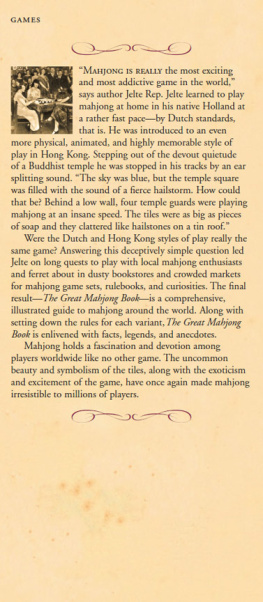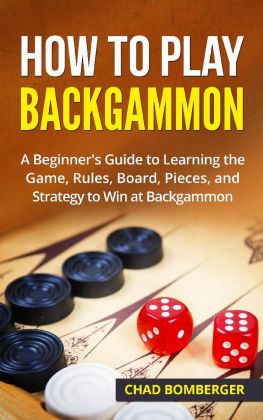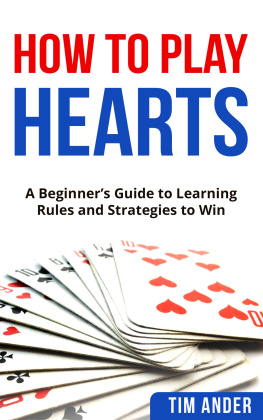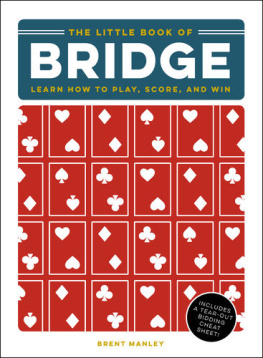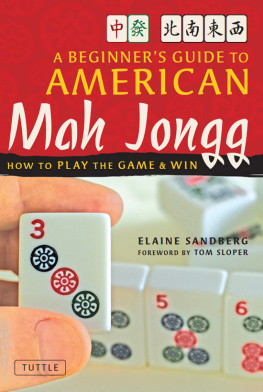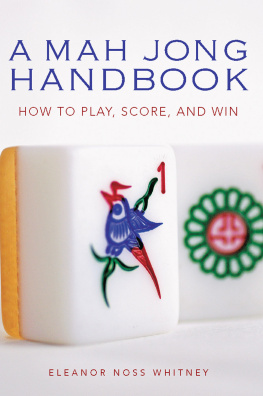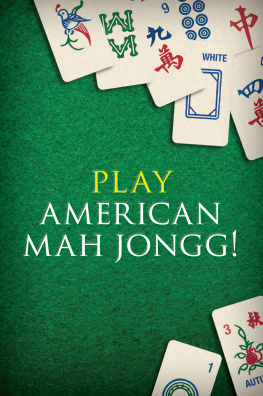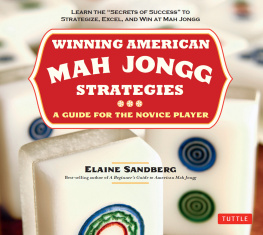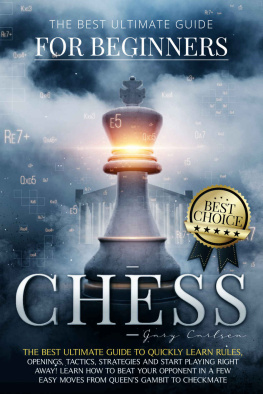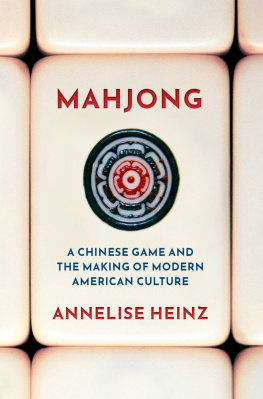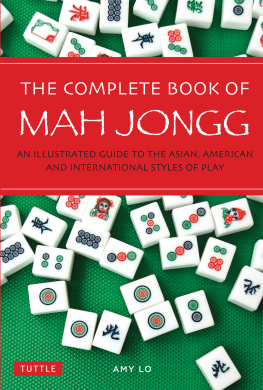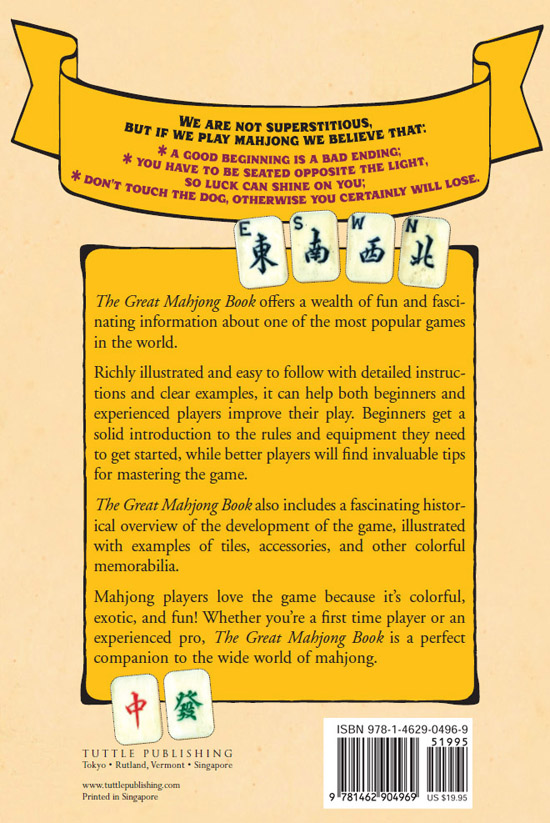For the realization of The Great Mahjong Book I am grateful to many friends, acquaintances, and total strangers, who became friends. Without their help and guidance, this book would not have become a great book of mahjong:
Ed Walters , Publishing Director of Tuttle Publishing, who saw the possibilities of widening the audience for this book, which was originally published in a Dutch edition;
Holly Jennings , the editor who saw the book through to bound book, and who worked steadfastly to Americanize my English, a worthy task since Dutch is my first language;
Kathy Wee and Daniel Urban for their beautiful design of the interior and cover of this edition; Kirsten Bjorneboe for her design of the interior of the original Dutch edition, which was the basis for this books layout;
Martin Rep , editor of the independent internet newspaper Mahjong NEWS, who read, commented on, and corrected all versions of the Dutch edition, and remained constantly enthusiastic;
Ryan Morris , a mahjong consultant, expert especially in Japanese Riichi and Chinese Official play, who, in the course of reading the English manuscript, raised good questions, provided excellent comments, and helped in places to smooth out my ofttimes awkward English syntax;
Jim May , who generously donated much material from his internet Mah Jong Museum;
Ria Rep , my lifetime inspiration and supporter.
UNPACKING YOUR
MAHJONG SET
You never forget the first timeyour first love, your first kiss, the first time you saw a mahjong set. The packaging could have been a tasteless plastic case or a refined rose wooden drawer box with brass fittings. The first sight of its contents is unforgettable: nicely arranged, softly shining tiles with odd pictures in subtle colors. What kind of game is this?

An antique mahjong set with five drawers containing the tiles and accessories
Tiles
To begin to understand mahjong, you must become familiar with its many components. A complete mahjong set usually contains 144 tiles, but often four and sometimes eight tiles more, in addition to some accessories. First lets look at the different types of tiles. They can be divided as follows:
Circles
Numbered from 1 through 9, four tiles of each number, for a total of thirty-six.

Circle-1 through Circle-9
The Circles are also called dots or balls. Since counting sticks contain dots, I prefer to refer to these tiles as Circles.
Bamboos
Numbered from 1 through 9, four tiles of each number, for a total of thirty-six.

1-Bamboo through 9-Bamboo
1-Bamboo is remarkable; on it a mythical bird called Pe-ling is depicted, which in Chinese means beautiful singing. However, the bird depicted is not always a Chinese songbird, but most often a peacock, pheasant, or a sparrow.
Characters
Numbered from 1 through 9, four tiles of each number, for a total of thirty-six.

1-Character through 9-Character
The lower red ideograph represents the number ten thousand. The upper part consists of the numbers 1 through 9, so the Character tiles represent the numbers ten thousand through ninety thousand in Chinese.
Dragons
Dragons consist of Red Dragons (often indicated with the letter C ), Green Dragons (indicated by F ), and White Dragons (indicated by P or B ). There are four of each tile, for a total of twelve.

The Red, Green, and White Dragons
The Chinese Characters on the Dragon tiles are Chung (middle) for the Red Dragon, Fa (growth) for the Green Dragon, and Po (blank) for the White Dragon. In some sets, completely blank tiles serve as White Dragons.
Winds
Winds consist of the East Wind (often indicated with the letter E ), the South Wind (indicated by the letter S ), the West Wind (indicated by the letter W ), and the North Wind (indicated by the letter N ). There are four of each tile, for a total of sixteen.

The Four Winds
Bonus Tiles
There are eight bonus tiles, which are subdivided in two groups of four tiles, and are differentiated by the color of their numbersone group has red numbers, the other green. The numbers of the tiles correspond with the seats of the four players. The number 1 belongs to East, 2 to South, 3 to West, and 4 to North. The tiles are not used to build hands (they do not form Pungs or Chows), but are used as counters for special bonuses (or penalties) applied to players.

The two groups of bonus tiles
The Chinese artisans have indulged their fantasies on the bonus tiles. The result is that the bonus tiles are not uniform in style or content. The only distinction between the two sets is the color of the Chinese characters.
The pictures vary from set to set and are not easily distinguished from each other. Sometimes flowers and seasons are depicted, sometimes flowers are used exclusively, and at other times there are no flowers at all. The following are some themes: wind-flower-snow-moon; fisher-woodcutter-farmer-master; music playingchess playingwritingpainting; and Chinese means of transport (handcart-sedan-rickshaw-junk) or structures (bridge-gate-pavilion-pagoda).

The Chinese tile carver can indulge his craft on the bonus tiles, creating the most beautiful decorations. This set from 1925, destined for export to America, has thirty-two different bonus tiles.
For Westerners, the characters on the bonus tiles are cryptic. The characters in each series often form a strophe from a poem that the engraver liked or that he felt he could easily appropriate. The two strophes have nothing to do with the bonus tiles they decorate. Because the bonus tiles give the engraver the opportunity to indulge his craftsmanship, fantasy, and artistic feelings, they are the most beautiful of the whole set.
The bonus tiles are also called The Eight Apostles by the Chinese, a reference to the eight immortal followers of the great Chinese philosopher Lao Tse (from the second century B.C.E.) who, through their ascetic and devout practice, became saints in their kingdom of heaven.
The modern Western versions are much more prosaic. They have clear texts and numbers and much less beautiful pictures. They represent the four seasons spring, summer, autumn, and winterand four matching flowersplum, orchid, chrysanthemum, and bamboo.

